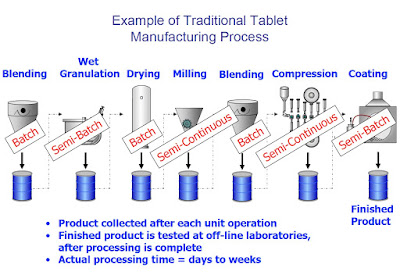 |
| Biomass converted to gasoline (image courtesy of epa.gov) |
In the long run, we will need diverse technologies to make use of these different energy sources. Some technologies are already developed; others will be. Today, the most common technologies involve biochemical, chemical, and thermochemical conversion processes.
Ethanol, today’s largest volume biofuel, is produced through a biochemical conversion process. In this process, yeasts ferment sugar from starch and sugar crops into ethanol. Most of today’s ethanol is produced from cornstarch or sugarcane. But biochemical conversion techniques can also make use of more abundant “cellulosic” biomass sources such as grasses, trees, and agricultural residues.
Researchers develop processes that use heat, pressure, chemicals, and enzymes to unlock the sugars in cellulosic biomass. The sugars are then fermented to ethanol, typically by using genetically engineered micro- organisms. Cellulosic ethanol is the leading candidate for replacing a large portion of U.S. petroleum use.
A much simpler chemical process is used to produce biodiesel. Today’s biodiesel facilities start with vegetable oils, seed oils, or animal fats and react them with methanol or ethanol in the presence of a catalyst. In addition, genetic engineering work has produced algae with a high lipid content that can be used as another source of biodiesel.
Algae are a form of biomass which could substantially increase our nation’s ability to produce domestic biofuels. Algae and plants can serve as a natural source of oil, which conventional petroleum refineries can convert into jet fuel or diesel fuel—a product known as “green diesel.”
Researchers also explore and develop thermochemical processes for converting biomass to liquid fuels. One such process is pyrolysis, which decomposes biomass by heating it in the absence of air. This produces an oil-like liquid that can be burned like fuel oil or re ned into chemicals and fuels, such as “green gasoline.” Thermochemical processes can also be used to pretreat biomass for conversion to biofuels.
Another thermochemical process is gasification. In this process, heat and a limited amount of oxygen are used to convert biomass into a hot synthesis gas. This “syngas” can be combusted and used to produce electricity in a gas turbine or converted to hydrocarbons, alcohols, ethers, or chemical products. In this process, biomass gasifiers can work side by side with fossil fuel gasifiers for greater flexibility and lower net greenhouse gas emissions.
In the future, biomass-derived components such as carbohydrates, lignins, and triglycerides might also be converted to hydrocarbon fuels. Such fuels can be used in heavy-duty vehicles, jet engines, and other applications that need fuels with higher energy densities than those of ethanol or biodiesel.
Ethanol, today’s largest volume biofuel, is produced through a biochemical conversion process. In this process, yeasts ferment sugar from starch and sugar crops into ethanol. Most of today’s ethanol is produced from cornstarch or sugarcane. But biochemical conversion techniques can also make use of more abundant “cellulosic” biomass sources such as grasses, trees, and agricultural residues.
Researchers develop processes that use heat, pressure, chemicals, and enzymes to unlock the sugars in cellulosic biomass. The sugars are then fermented to ethanol, typically by using genetically engineered micro- organisms. Cellulosic ethanol is the leading candidate for replacing a large portion of U.S. petroleum use.
A much simpler chemical process is used to produce biodiesel. Today’s biodiesel facilities start with vegetable oils, seed oils, or animal fats and react them with methanol or ethanol in the presence of a catalyst. In addition, genetic engineering work has produced algae with a high lipid content that can be used as another source of biodiesel.
Algae are a form of biomass which could substantially increase our nation’s ability to produce domestic biofuels. Algae and plants can serve as a natural source of oil, which conventional petroleum refineries can convert into jet fuel or diesel fuel—a product known as “green diesel.”
Researchers also explore and develop thermochemical processes for converting biomass to liquid fuels. One such process is pyrolysis, which decomposes biomass by heating it in the absence of air. This produces an oil-like liquid that can be burned like fuel oil or re ned into chemicals and fuels, such as “green gasoline.” Thermochemical processes can also be used to pretreat biomass for conversion to biofuels.
Another thermochemical process is gasification. In this process, heat and a limited amount of oxygen are used to convert biomass into a hot synthesis gas. This “syngas” can be combusted and used to produce electricity in a gas turbine or converted to hydrocarbons, alcohols, ethers, or chemical products. In this process, biomass gasifiers can work side by side with fossil fuel gasifiers for greater flexibility and lower net greenhouse gas emissions.
In the future, biomass-derived components such as carbohydrates, lignins, and triglycerides might also be converted to hydrocarbon fuels. Such fuels can be used in heavy-duty vehicles, jet engines, and other applications that need fuels with higher energy densities than those of ethanol or biodiesel.



